Abstract
The in vivo metabolism of tritiated DMAB was examined in male Syrian golden hamsters, which are susceptible to both urinary bladder and intestinal carcinogenesis by this agent and in male F344 rats in which intestinal tumors represent the main lesions. Evidence was obtained for the presence of the N-hydroxy-N-glucuronide of DMAB as a major metabolite in hamster urine and bile and in rat bile but not urine. The routes of excretion of this metabolite, which may represent a transport form of the ultimate carcinogen, correlate well with the main tumor sites in the two species. Other metabolites partially identified were the sulfates and glucuronides of C-hydroxylated DMAB and C-hydroxylated-N-acetyl DMAB.
Full text
PDF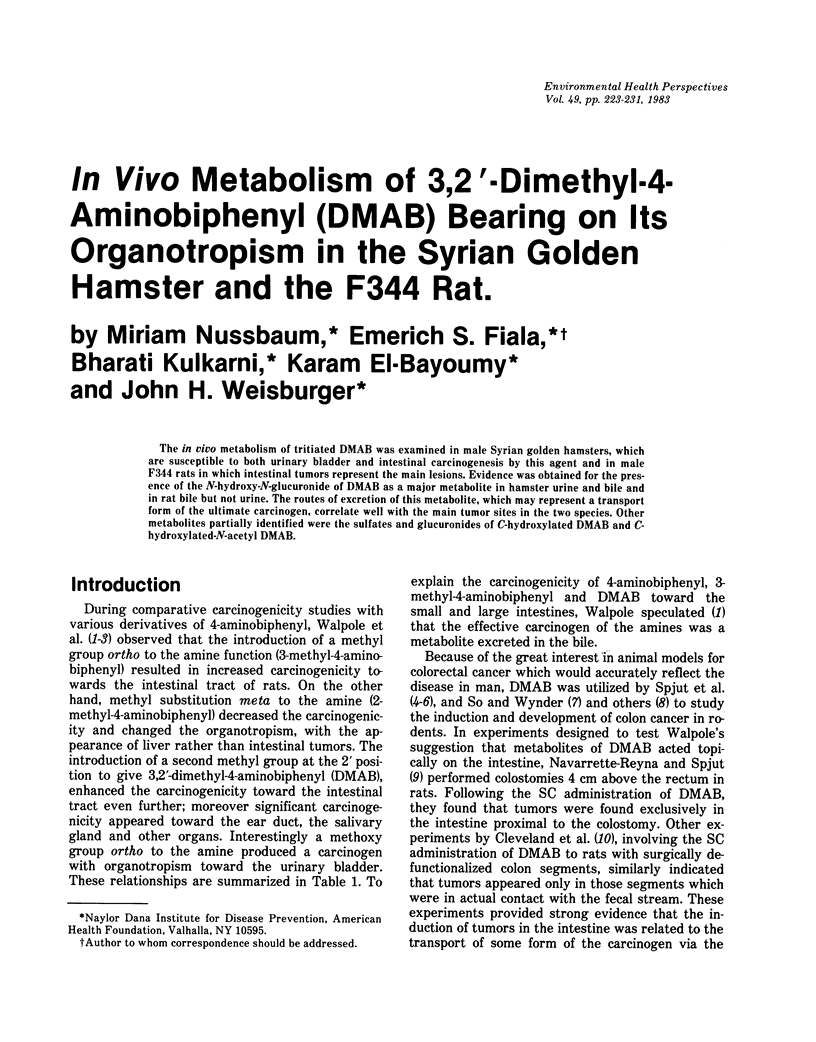
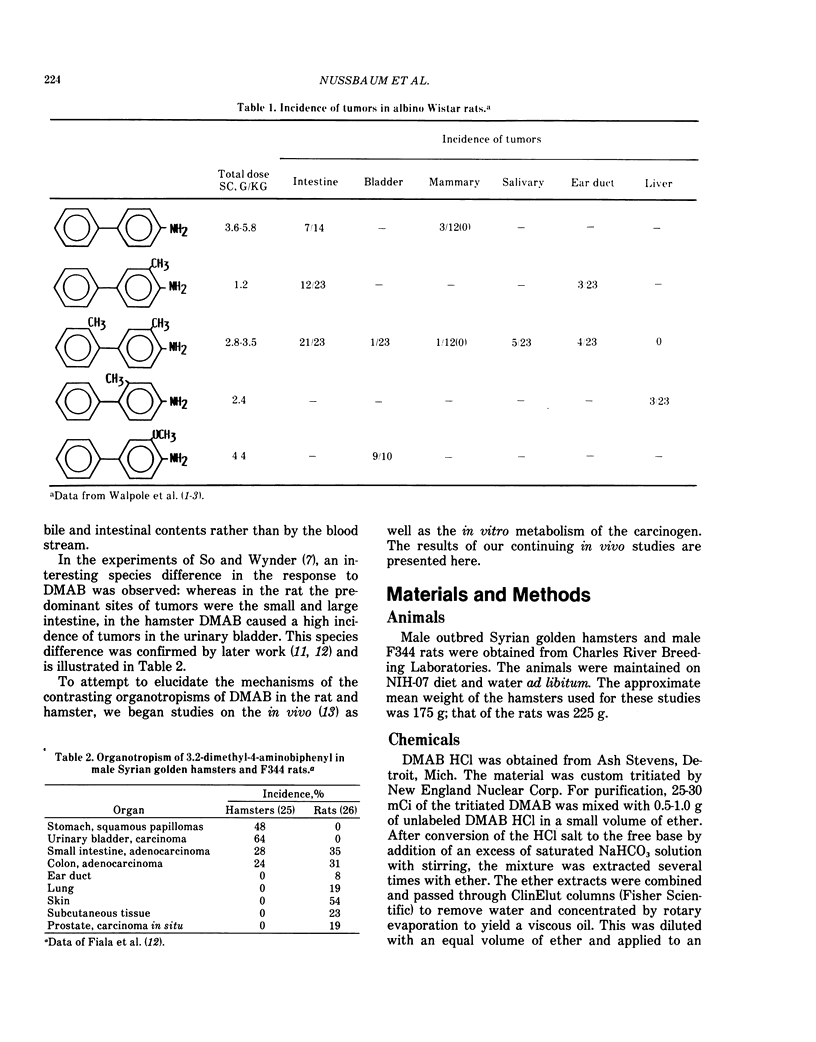
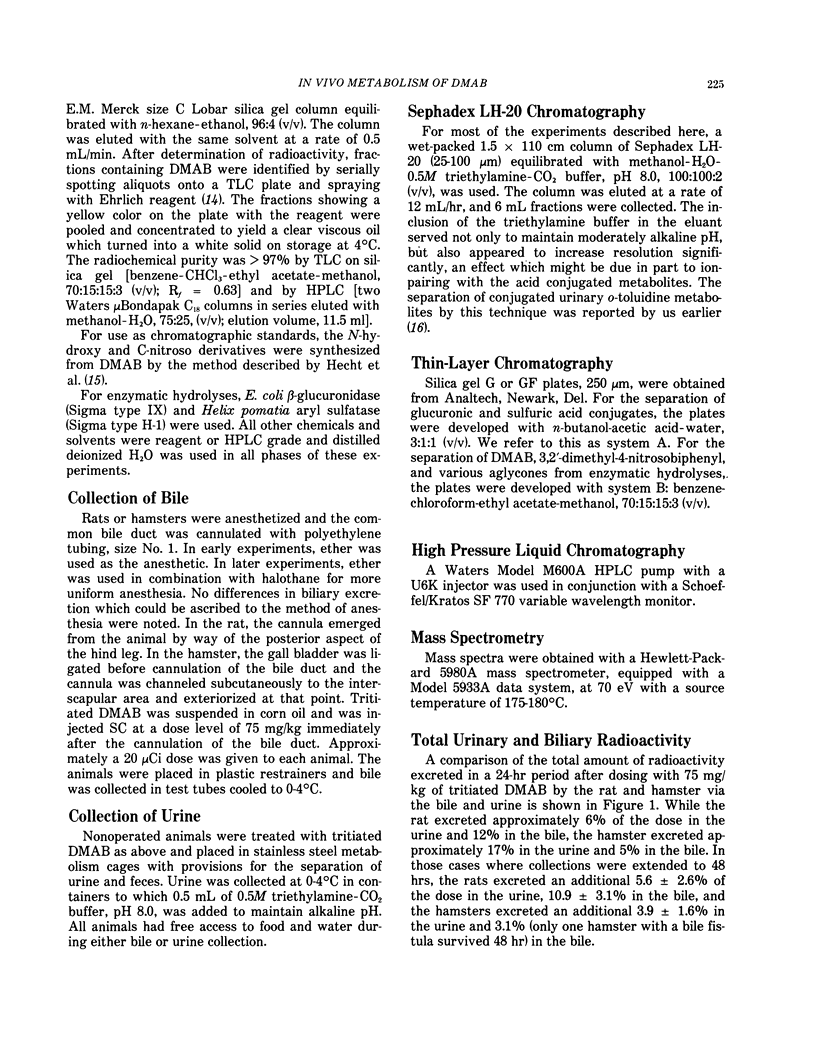
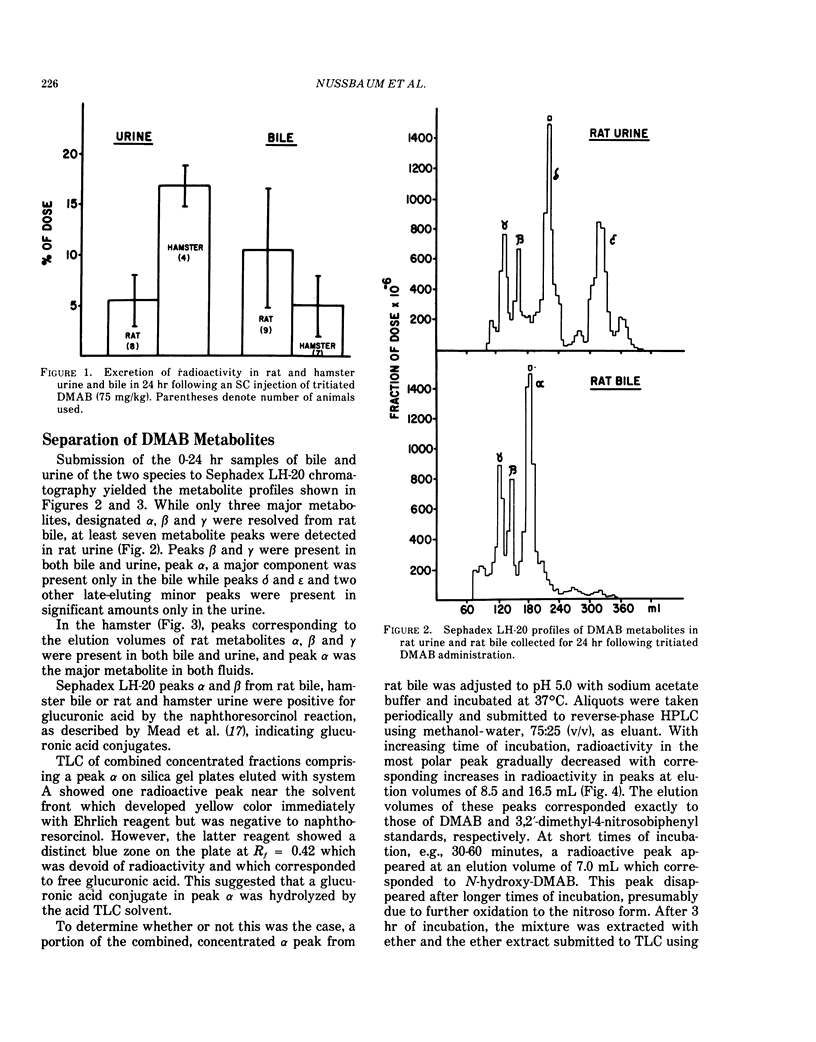
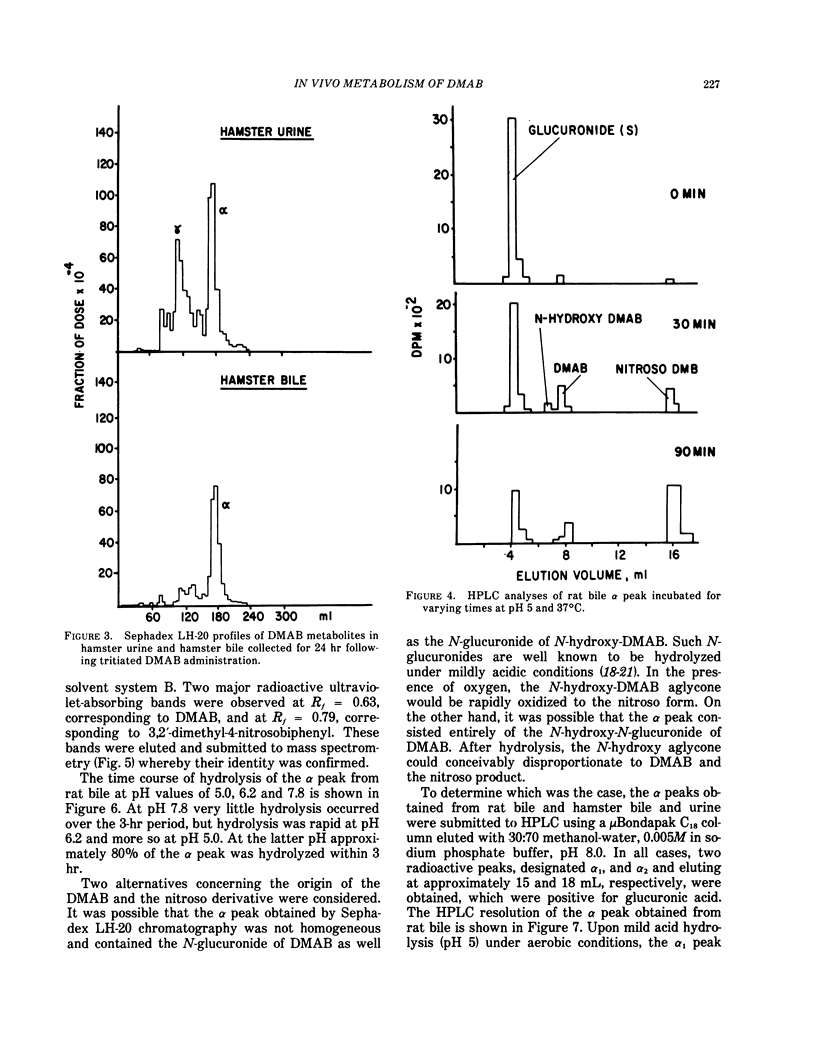
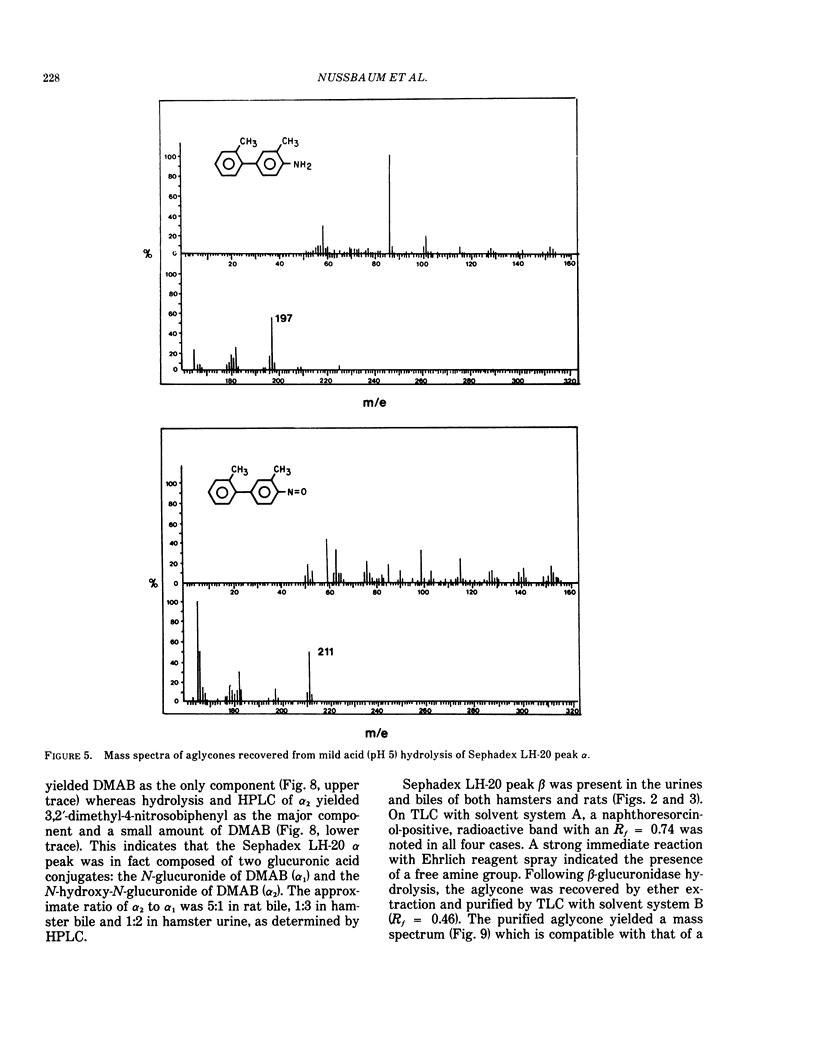
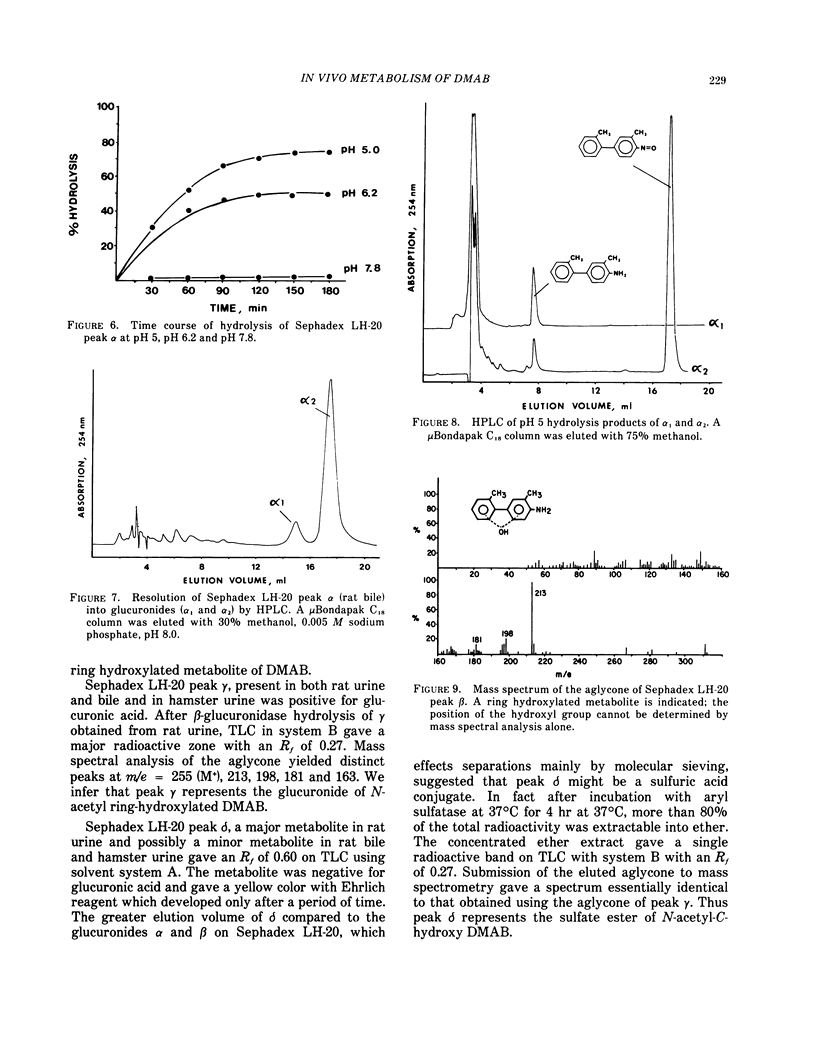
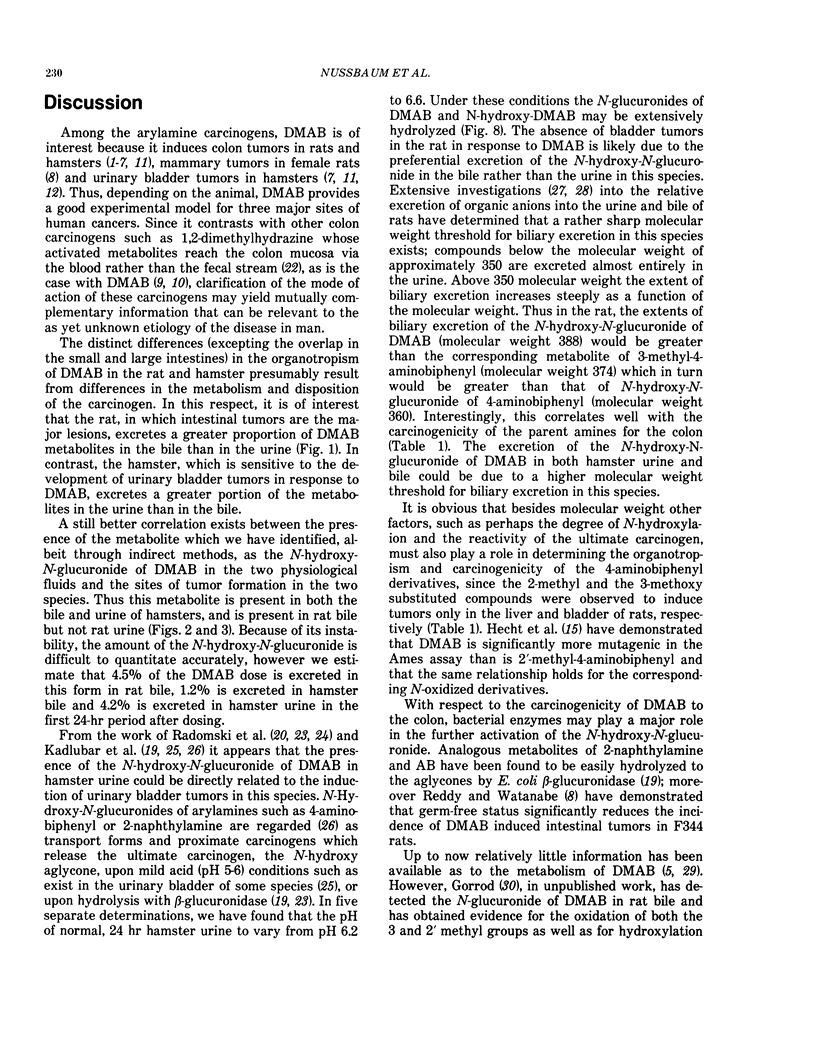
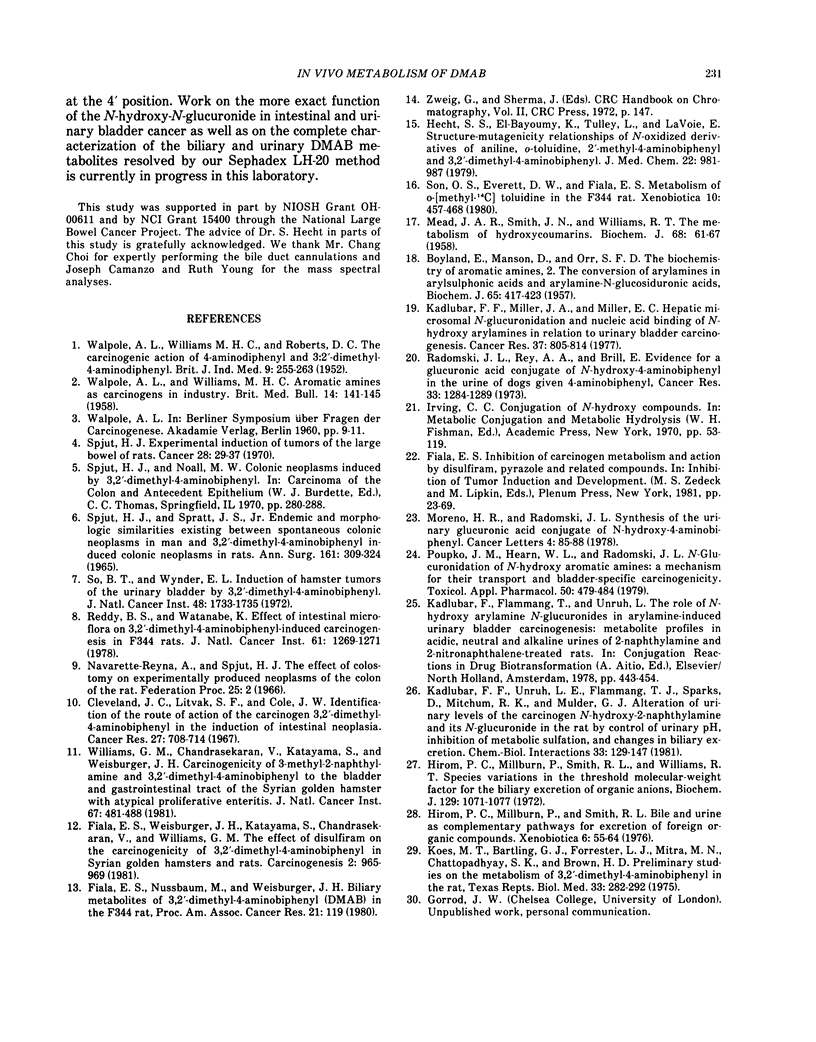
Selected References
These references are in PubMed. This may not be the complete list of references from this article.
- BOYLAND E., MANSON D., ORR S. F. The biochemistry of aromatic amines. II. The conversion of arylamines into arylsulphamic acids and arylamine-N-glucosiduronic acids. Biochem J. 1957 Mar;65(3):417–423. doi: 10.1042/bj0650417a. [DOI] [PMC free article] [PubMed] [Google Scholar]
- Cleveland J. C., Litvak S. F., Cole J. W. Identification of the route of action of the carcinogen 3:2-dimethyl-4-aminobiphenyl in the induction of intestinal neoplasia. Cancer Res. 1967 Apr;27(4):708–714. [PubMed] [Google Scholar]
- Fiala E. S., Weisburger J. H., Katayama S., Chandrasekaran V., Williams G. M. The effect of disulfiram on the carcinogenicity of 3,2'dimethyl-4-aminopbiphenyl in Syrian golden hamsters and rats. Carcinogenesis. 1981;2(10):965–969. doi: 10.1093/carcin/2.10.965. [DOI] [PubMed] [Google Scholar]
- Hecht S. S., El-Bayoumy K., Tulley L., LaVoie E. Structure-mutagenicity relationships of N-oxidized derivatives of aniline, o-toluidine, 2'-methyl-4-aminobiphenyl, and 3,2'-dimethyl-4-aminobiphenyl. J Med Chem. 1979 Aug;22(8):981–987. doi: 10.1021/jm00194a019. [DOI] [PubMed] [Google Scholar]
- Hirom P. C., Millburn P., Smith R. L. Bile and urine as complementary pathways for the excretion of foreign organic compounds. Xenobiotica. 1976 Jan;6(1):55–64. doi: 10.3109/00498257609151612. [DOI] [PubMed] [Google Scholar]
- Hirom P. C., Millburn P., Smith R. L., Williams R. T. Species variations in the threshold molecular-weight factor for the biliary excretion of organic anions. Biochem J. 1972 Oct;129(5):1071–1077. doi: 10.1042/bj1291071. [DOI] [PMC free article] [PubMed] [Google Scholar]
- Kadlubar F. F., Miller J. A., Miller E. C. Hepatic microsomal N-glucuronidation and nucleic acid binding of N-hydroxy arylamines in relation to urinary bladder carcinogenesis. Cancer Res. 1977 Mar;37(3):805–814. [PubMed] [Google Scholar]
- Kadlubar F. F., Unruh L. E., Flammang T. J., Sparks D., Mitchum R. K., Mulder G. J. Alteration of urinary levels of the carcinogen, N-hydroxy-2-naphthylamine, and its N-glucuronide in the rat by control of urinary pH, inhibition of metabolic sulfation, and changes in biliary excretion. Chem Biol Interact. 1981 Jan;33(2-3):129–147. doi: 10.1016/0009-2797(81)90036-3. [DOI] [PubMed] [Google Scholar]
- MEAD J. A., SMITH J. N., WILLIAMS R. T. Studies in detoxication. 71. The metabolism of hydroxycoumarins. Biochem J. 1958 Jan;68(1):61–67. doi: 10.1042/bj0680061. [DOI] [PMC free article] [PubMed] [Google Scholar]
- Moreno H. R., Radomski J. L. Synthesis of the urinary glucuronic acid conjugate of N-hydroxy-4-aminobiphenyl. Cancer Lett. 1978 Feb;4(2):85–88. doi: 10.1016/s0304-3835(78)93632-7. [DOI] [PubMed] [Google Scholar]
- Poupko J. M., Hearn W. L., Radomski J. L. N-Glucuronidation of N-hydroxy aromatic amines: a mechanism for their transport and bladder-specific carcinogenicity. Toxicol Appl Pharmacol. 1979 Sep 30;50(3):479–484. doi: 10.1016/0041-008x(79)90401-0. [DOI] [PubMed] [Google Scholar]
- Radomski J. L., Rey A. A., Brill E. Evidence for a glucuronic acid conjugate of N-hydroxy-4-aminobiphenyl in the urine of dogs given 4-aminobiphenyl. Cancer Res. 1973 Jun;33(6):1284–1289. [PubMed] [Google Scholar]
- Reddy B. S., Watanabe K. Effect of intestinal microflora on 2,2'-dimethyl-4-aminobiphenyl-induced carcinogenesis in F344 rats. J Natl Cancer Inst. 1978 Nov;61(5):1269–1271. doi: 10.1093/jnci/61.5.1269. [DOI] [PubMed] [Google Scholar]
- SPJUT H. J., SPRATT J. S., Jr ENDEMIC AND MORPHOLOGIC SIMILARITIES EXISTING BETWEEN SPONTANEOUS COLONIC NEOPLASMS IN MAN AND 3:2'-DIMETHYL-4-AMINOBIPHENYL INDUCED COLONIC NEOPLASMS IN RATS. Ann Surg. 1965 Feb;161:309–324. doi: 10.1097/00000658-196502000-00020. [DOI] [PMC free article] [PubMed] [Google Scholar]
- So B. T., Wynder E. L. Induction of hamster tumors of the urinary bladder by 3,2'-dimethyl-4-aminobiphenyl. J Natl Cancer Inst. 1972 Jun;48(6):1733–1738. [PubMed] [Google Scholar]
- Son O. S., Everett D. W., Fiala E. S. Metabolism of o-[methyl-14C]toluidine in the F344 rat. Xenobiotica. 1980 Jul-Aug;10(7-8):457–468. doi: 10.3109/00498258009033781. [DOI] [PubMed] [Google Scholar]
- Spjut H. J., Noall M. W. Experimental induction of tumors of the large bowel of rats. A review of the experience with 3-2' dimethyl-4-aminobiphenyl. Cancer. 1971 Jul;28(1):29–37. doi: 10.1002/1097-0142(197107)28:1<29::aid-cncr2820280107>3.0.co;2-x. [DOI] [PubMed] [Google Scholar]
- WALPOLE A. L., WILLIAMS M. H. C., ROBERTS D. C. The carcinogenic action of 4-aminodiphenyl and 3:2'-dimethyl-4-amino-diphenyl. Br J Ind Med. 1952 Oct;9(4):255–263. doi: 10.1136/oem.9.4.255. [DOI] [PMC free article] [PubMed] [Google Scholar]
- WALPOLE A. L., WILLIAMS M. H. Aromatic amines as carcinogens in industry. Br Med Bull. 1958 May;14(2):141–145. doi: 10.1093/oxfordjournals.bmb.a069657. [DOI] [PubMed] [Google Scholar]
- Williams G. M., Chandrasekaran V., Katayama S., Weisburger J. H. Carcinogenicity of 3-methyl-2-naphthylamine and 3,2'-dimethyl-4-aminobiphenyl to the bladder and gastrointestinal tract of the Syrian golden hamster with atypical proliferative enteritis. J Natl Cancer Inst. 1981 Aug;67(2):481–488. [PubMed] [Google Scholar]


